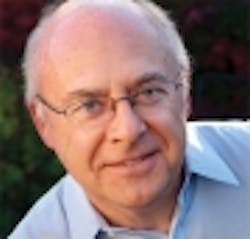
By the close of Laser World of Photonics 2011 at the end of May it was obvious that the event had shaken off the economic malaise surrounding the prior Laser conference held in 2009. Pretty much everyone seemed cheerfully confident about current and future business prospects, and Laser 2011 itself reported an 8% gain in attendance, attracting 27,500 visitors to the Munich convention center. The scope of the show—encompassing as it does practically all things photonic—can cause sensory overload but offers a great opportunity to examine many of the latest advances in technologies and products. Read more about these developments at laserfocusworld.com!
Obviously, optics were much in evidence in Munich and continuing advances in software and computers over the past few decades have fundamentally changed the way optics (and optical systems) are designed. The muscle of today’s computers enables optimization of complex designs “on paper” as well as the evaluation of their manufacturability. Hence the costs and yield issues previously associated with introducing a new design into manufacturing can be minimized or even eliminated (see cover and page 33).
On the laser front, Munich showcased a host of laser developments ranging from turnkey femtosecond solutions for multiphoton imaging to high-temperature quantum dot devices (see page 9). The growing importance of lasers to the production of photovoltaic cells was also a key topic there, and performance of the latest solid-state lasers promises faster processing of some solar cells (see page 47).
Meanwhile, though optical microscopy may well date back to the early 1600s, even today developments are crossing new frontiers: By magnifying underlying near-field objects, microsphere superlenses enable resolution better than 50 nm and allow real-time imaging of viruses and biomolecules (see page 61). And in the field of low-light imaging, CMOS and CCD devices continue to challenge each other as their relative merits are debated—intensified CCDs are one option discussed on page 51.
About the Author
Stephen G. Anderson
Director, Industry Development - SPIE
Stephen Anderson is a photonics industry expert with an international background and has been actively involved with lasers and photonics for more than 30 years. As Director, Industry Development at SPIE – The international society for optics and photonics – he is responsible for tracking the photonics industry markets and technology to help define long-term strategy, while also facilitating development of SPIE’s industry activities. Before joining SPIE, Anderson was Associate Publisher and Editor in Chief of Laser Focus World and chaired the Lasers & Photonics Marketplace Seminar. Anderson also co-founded the BioOptics World brand. Anderson holds a chemistry degree from the University of York and an Executive MBA from Golden Gate University.